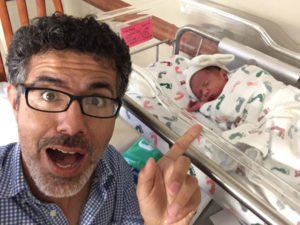
The summer Lucia was born, it seemed a lot of women I knew were having babies. Pictures going up on Facebook and Instagram, round babies with perfect heads, mothers with bright, sparkling faces. We’re happy to announce the arrival of our baby girl or boy, can’t wait to head home to our color coordinated nursery with prancing elephants and magical butterflies. And oh the breast milk! Breasts overflowing with milk for baby!
The day before we were supposed to go home, when my husband Daniel was changing Lucia’s diaper, he noticed she’d cry in pain when he moved her right leg. Something was not right—they talk about a mother’s instinct, but there’s also a father’s instinct, which is all we had.
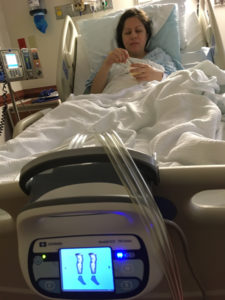
At that point, I hadn’t yet been able to change her diaper because of the excruciating pain of my C-section incision, feeling like my abdomen had been ripped apart and put back together with rusty nails. Even breastfeeding, which I should have been able to do while lying in bed, was a disaster.
I fumbled with nipple guards and a hospital grade pump for a couple of days until I gave up, until even the lactation consultants gave up. I shamefully accepted donor breast milk from other mothers whose breasts overflowed. Breastfeeding actually is a myth, something that perfect mothers do in far away lands with their perfect babies.
The nurses took Lucia in for x-rays to check on hip dysplasia. Common in breech babies, it’s where the ball of the thigh bone (femur) cannot firmly fit into the socket, so basically, the hips can go out of whack. If she had it, she’d have to wear a Pavlik harness, a full body brace, for about 6-12 weeks. But there was no hip dysplasia. That would have been the least of our worries.
Lucia’s pain was coming from a hairline fracture on her lower right femur, a result of the force used during the external cephalic version. Our baby had been experiencing pain for the first three days of her life, and we hadn’t noticed.
On my first day in the first grade, I slipped at the playground, hitting the ground with a loud thud. Looking up at the sky, my shoulder throbbing, I can’t get off the ground. I was six years old, and the school nurses thought I was overreacting because I was crying so much. It turned out to be a broken collarbone.
If Daniel hadn’t used his instincts, they would have sent us home the next day, unaware we had a broken-leg baby. And that wasn’t all that the x-rays showed. Lucia also had a teratoma on her tailbone, a tethered spinal cord, and, as the pediatrician put it, something was wrong with her little butt-crack—that is, she was missing part of it.
By the way, she also had weird purple spots on her body, known as mongolian spots, common in dark-skinned babies. We discovered later on we’d have to mention this at the beginning of every doctor’s visit, so we wouldn’t be suspected of child abuse.
I was stunned. I didn’t even know what these things meant. A teratoma? A tumor made of tissue that could contain hair or teeth? Her spinal cord was defective? Was this related to spina bifida? Would her defective butt get in the way of being able to poop? Were all these things connected? Or were they separate things? What good were those prenatal genetic and screening tests for then?
Photos of other babies on Facebook and Instagram flashing in rapid succession before me, taunting me. You haven’t posted pictures of your own baby on social media. Your baby is far from perfect. Why am I thinking this way? My baby is perfect in every way—she’s my daughter. I love her.
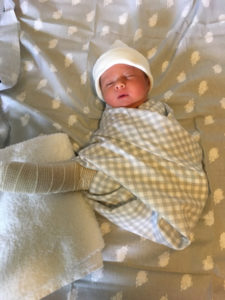
We went home with a four-day old baby in a leg splint. Whoever designed baby car seats and adjustable swaddle wraps did not design their products with us in mind. We set up the bassinet, which had never even been unpacked from the box, sorted through boxes of hand-me-down clothes and gift bags, and improvised a new way of using footie pajamas and swaddle wraps.
Just when we were getting our rhythm down at the end of our first week at home with her, Lucia started to become sluggish, suddenly eating less, breathing sounding like a rattle, the way my grandfather’s sounded on his deathbed. At four thirty on a Friday afternoon. There was no way to get to our pediatrician. We were terrified, our thin, premature baby in a leg splint. Without even thinking twice, we decided to go to the emergency room, regardless of how much it would cost.
Other parents were sharing pictures on Facebook and Instagram with weekly growth milestone stickers on their babies. We were trying to figure out if yet something else was going wrong with our new baby.
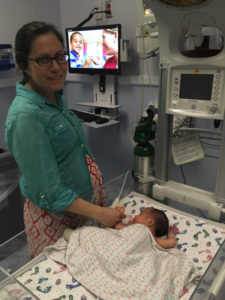
So it turned out to be a mild case of thrush, a fungal infection of the mouth. The ER doctor admonished us for us not doing a better job of disinfecting her pacifier. How silly of us, we should have been soaking it in a bleach water solution every night! We asked him about her breathing. “Oh,” said the ER doctor, “it’s normal and it’s not normal.” What the hell is that supposed to mean? Those aren’t comforting words to new parents.
He explained that premature babies are often born with a floppy airway, where the tissues of the larynx (voice box) above the vocal cords aren’t fully developed and still soft. Babies usually outgrow it by the time they’re a year old. One: hairline fracture. Two: teratoma. Three: tethered cord. Four: defective butt. Add one more to the list: Floppy airway.
I read stories about mothers not being able to sleep at night, listening to hear if their babies were still breathing. However, I could hear her breathing just fine—it was loud: rattling, wheezing, or snoring, depending on her position. Then brief moments of silence, followed by a short gasp. And I understood what it was like to be those mothers, wondering if their babies were still breathing. Except, Lucia’s silences meant she was truly not breathing.
The pauses in her breathing went away after the first several months. But she still snores like an old man some nights, even as she is one month past her first birthday. I’ve gotten used to it, a handy reassurance throughout the night that she’s fine. One day she’ll outgrow her floppy airway, and hopefully, then, I’ll be able to sleep through the silent nights.
When Lucia was two months old, her floppy airway was officially diagnosed as laryngomalacia, and we added it to the lists of things that weren’t as serious. By then her fracture had completely healed. Babies are resilient, the doctors kept telling us.
That left us with the teratoma and the tethered cord to continue worrying about.
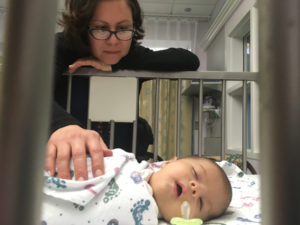
An MRI confirmed a sacrococcygeal teratoma, an unusual tumor that develops at the base of the coccyx (the tailbone) and occurs in roughly 1:35,000 births. It also confirmed that it was outside of Lucia’s spinal cord, and that she did not have a tethered cord. The neurosurgeon, who was the first to interpret the MRI for us, explained that not even the original imaging taken at her birth hospital led to any indication of a tethered cord.
We were relieved, but we were also angry that we were led to believe for two months that she might have a tethered cord. I’d spent the first two months of motherhood Googling tethered cords, instead of holding Lucia as often as I could, giving her skin-to-skin contact.
Nervous about holding her and changing her diaper for the first three weeks because of her broken leg. Afraid to fall asleep because of her noisy breathing, not being able to sleep because of her noisy breathing. Frustrated that it took me an hour to bottle feed her because she’d choke on milk every five minutes, until we learned there was a special way to feed babies with laryngomalacia.
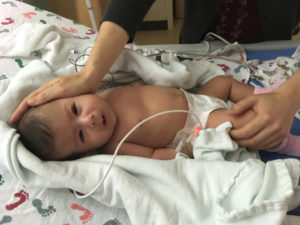
Lucia had her first surgery at three months of age. I choked up when they wheeled her away in the big bed, the same way they’d taken her away for the MRI and the bronchoscopy. I choked up even more when they brought her back in the little red wagon, with dozens of wires hanging off her tiny body. Lucia crying inconsolably, me following from behind, feeling as if I’d never catch up to her, never be there for her in the way I really wanted to be.
The happiest moments of my life, being a new mother, loving this infant, my daughter, beautiful in spite of her mongolian spots, her noisy breathing, and the crooked scar at the base of her tailbone, all these feelings swirling around in a blender with some of the scariest moments of my life, being a new mother, loving this infant who had so many health problems, not knowing what was around the corner.
For the first three months of her life, we were at a children’s hospital at least every other week to see some kind of specialist. Orthopedist. Lactation consultant. Pulmonologist. General surgeon. Neurosurgeon. Urologist. Osteopath. In a way, it was comforting to be seeing doctors so often, knowing that nothing would slip through the cracks. Or would it?
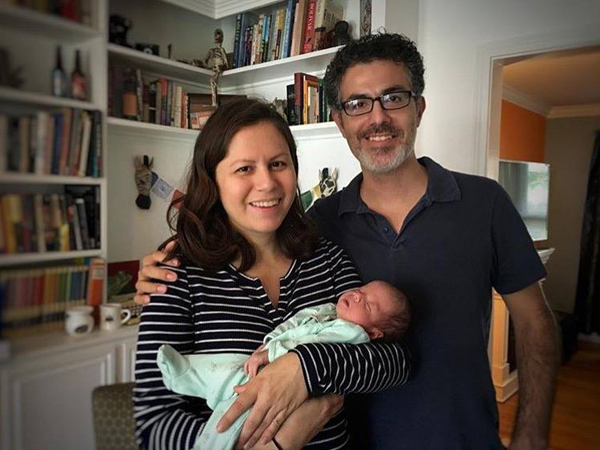
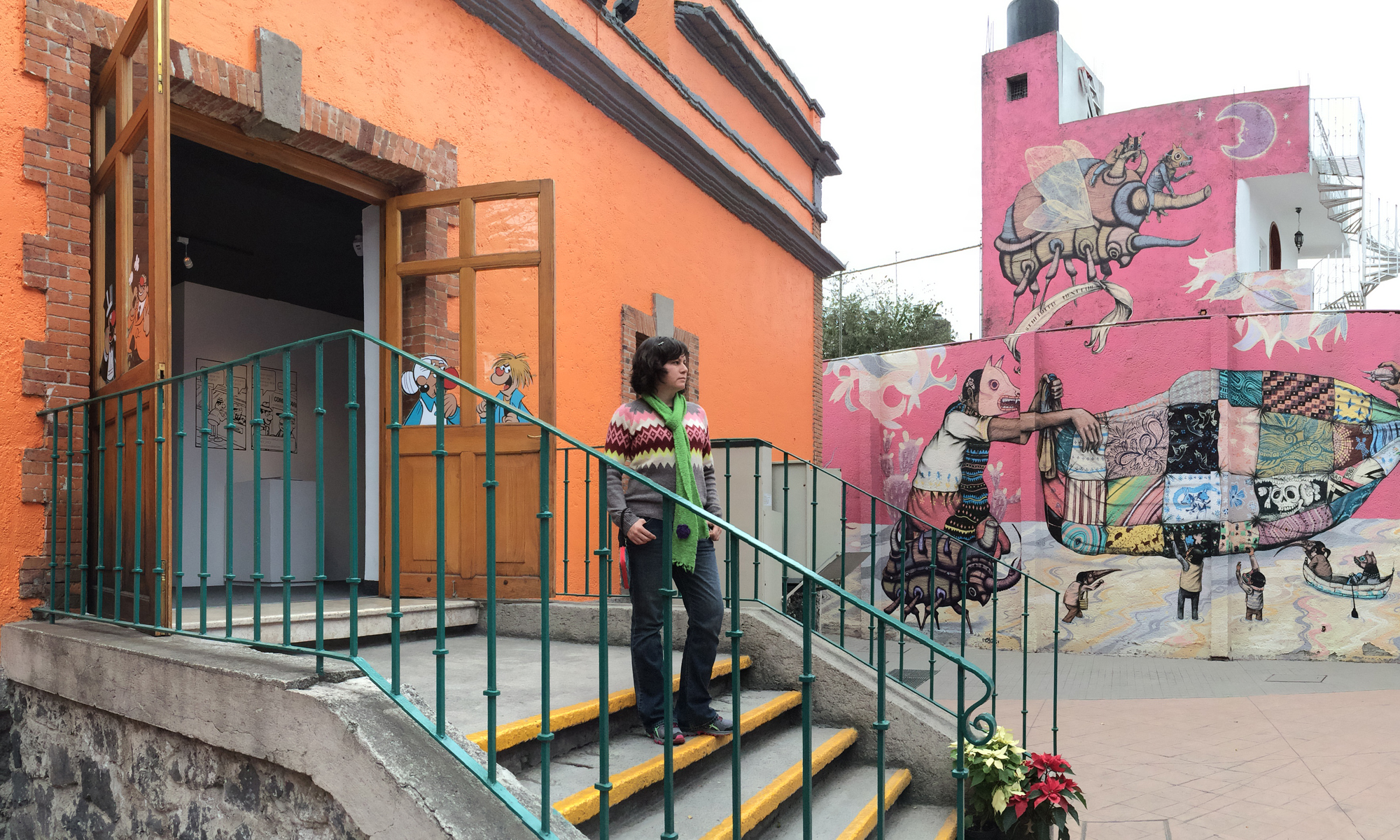
Darlin’ Lucia and beautiful parents … you have all been through such things as I can’t imagine, yet you’re coming out at the brighter end … blessings and continued upward progress for your family!
What an epic story, beautifully written as always … looking forward to part 3….
Wow, just read your post about beautiful baby Lucia. I stumbled upon your blog after my Duralex glass shattered.
Hope baby is well.
Hi there—
It’s been just over a week since we took one of my twins to the ER and he was diagnosed w laryngomalacia. I feel so bad for him; he just looks miserable and terrified all the time.
But I’m writing because I’m doing a combo of breastfeeding and bottle feeding and NO ONE has mentioned a special way feeding babies with laryngomalacia that you mentioned. I’m about to go Googling, but would love to head it from another mom!
Disclaimer: I am not a medical expert. 🙂 It’s called “paced bottle feeding” — I’d recommend asking your pediatrician about it, and if it’s something they would recommend for your baby.